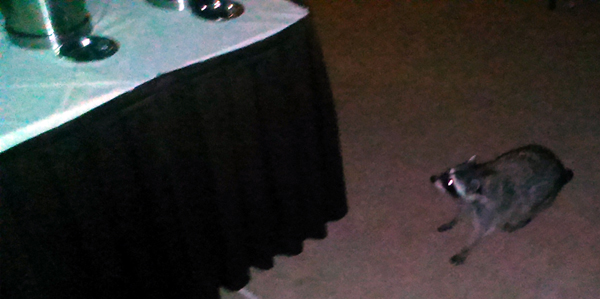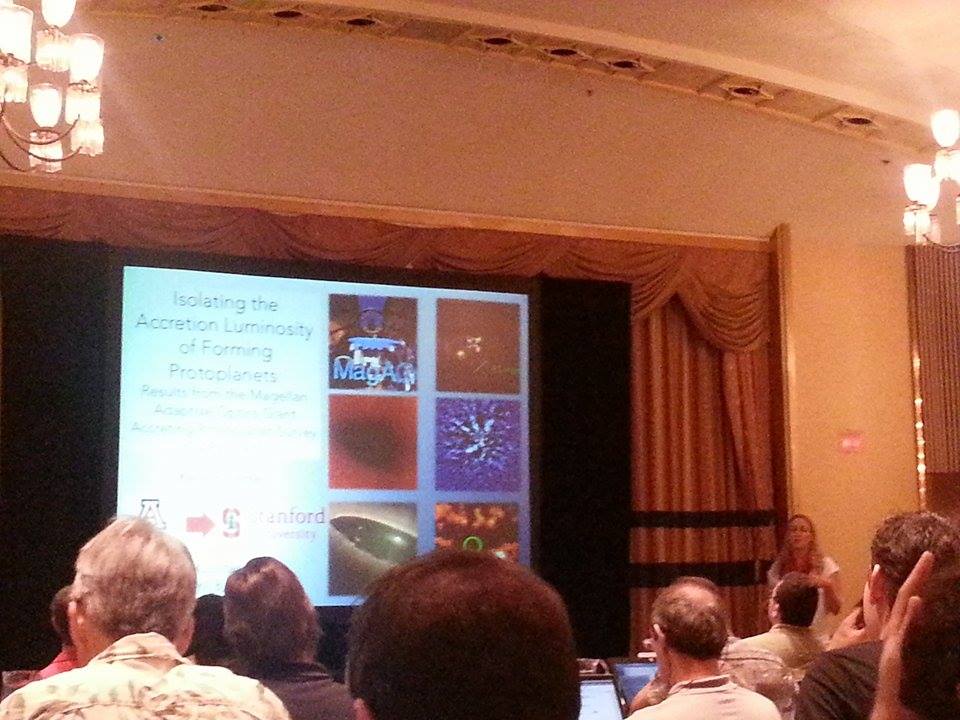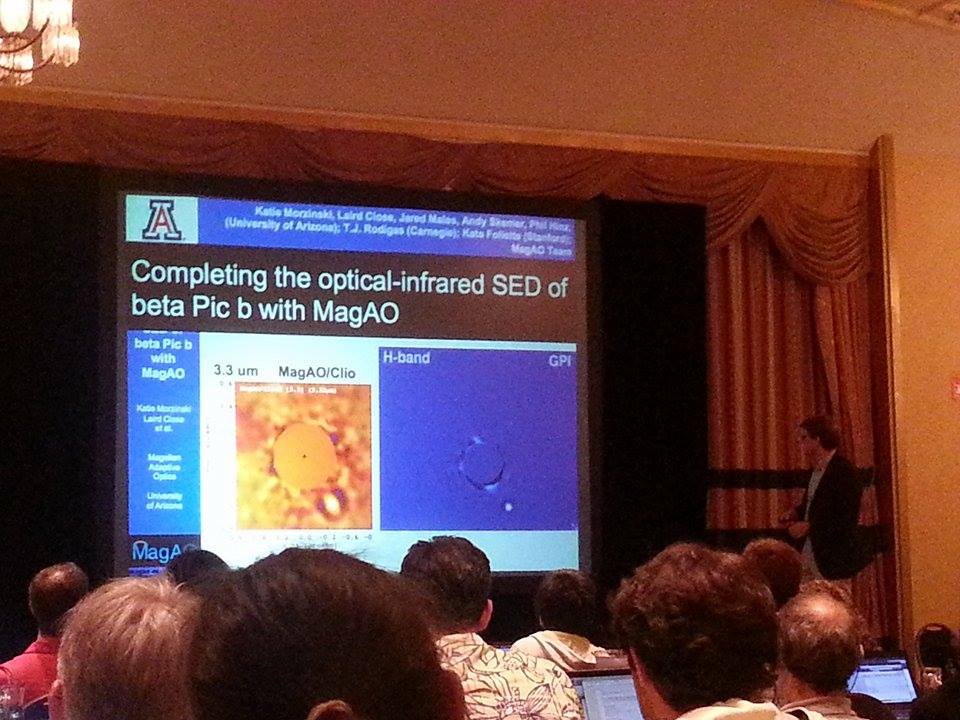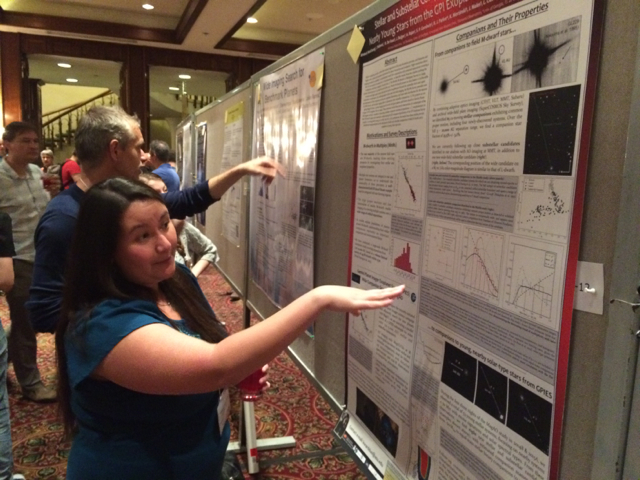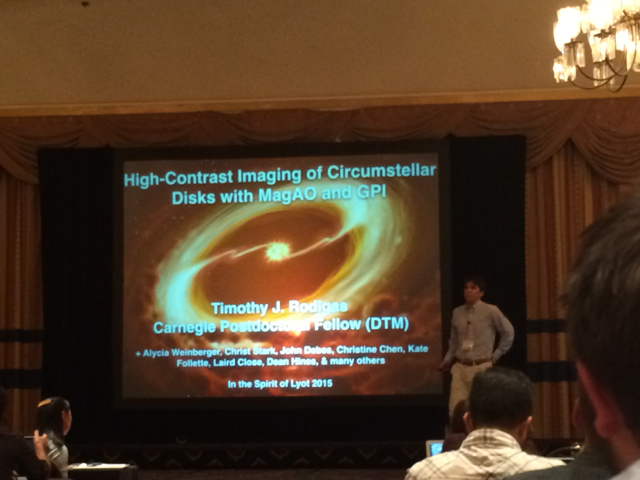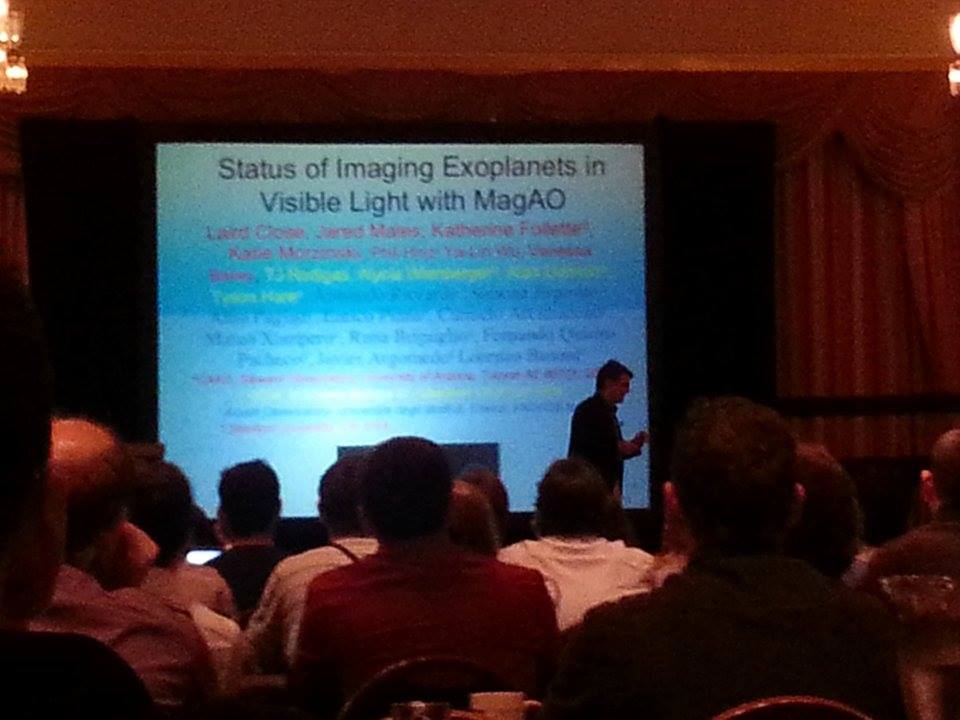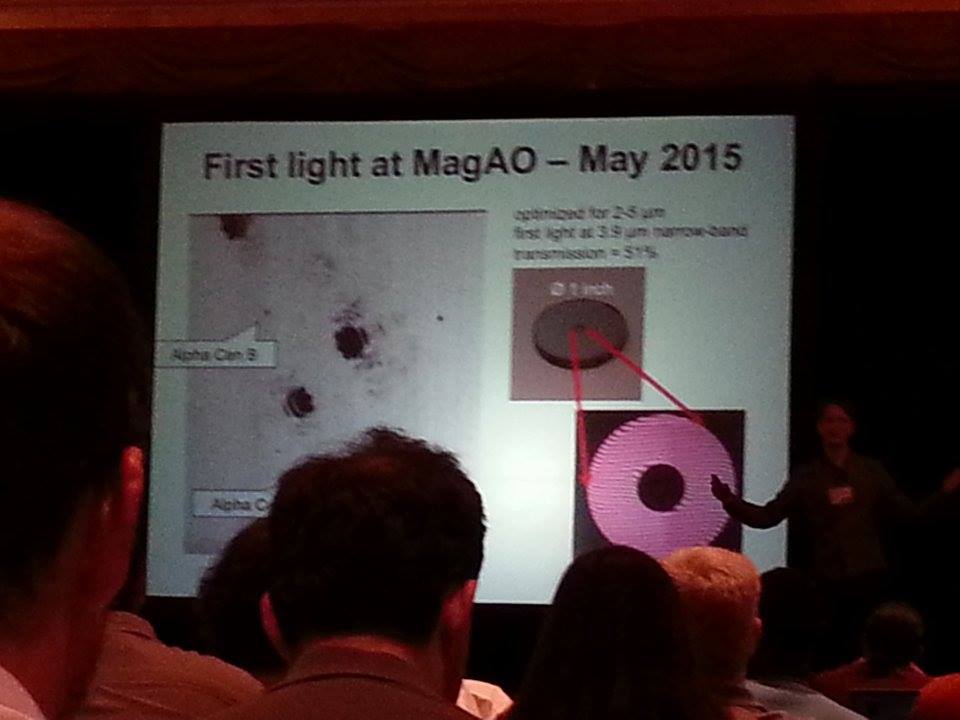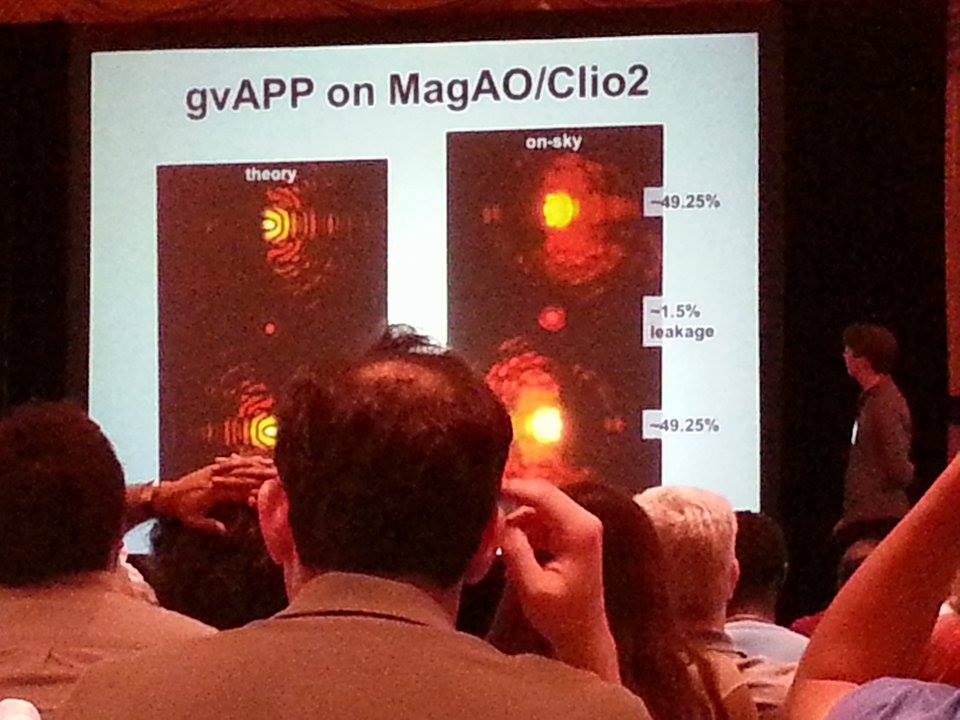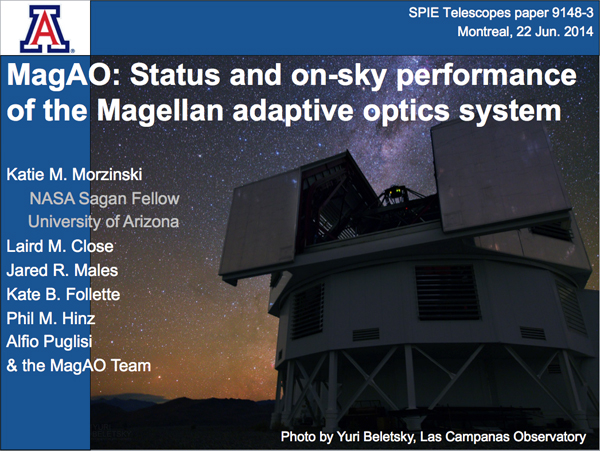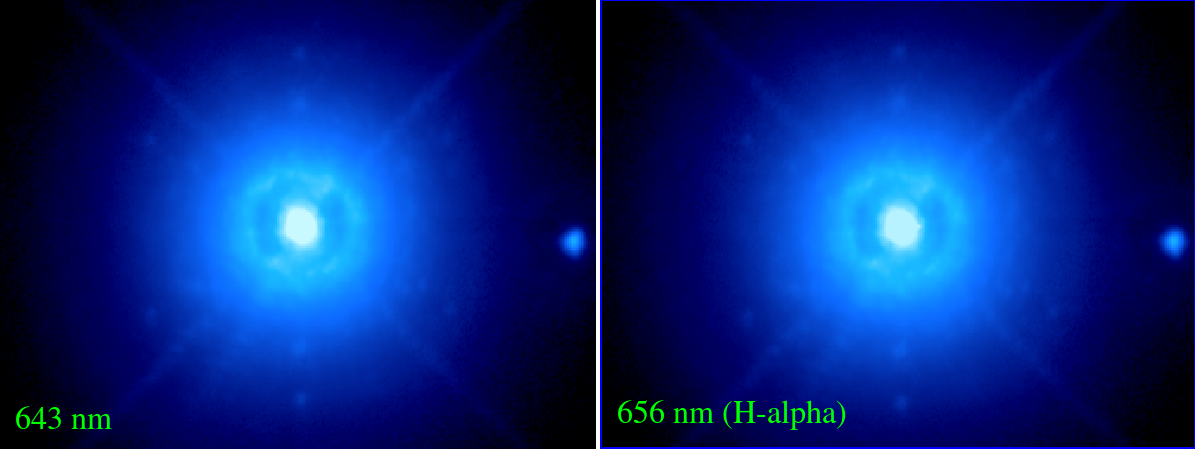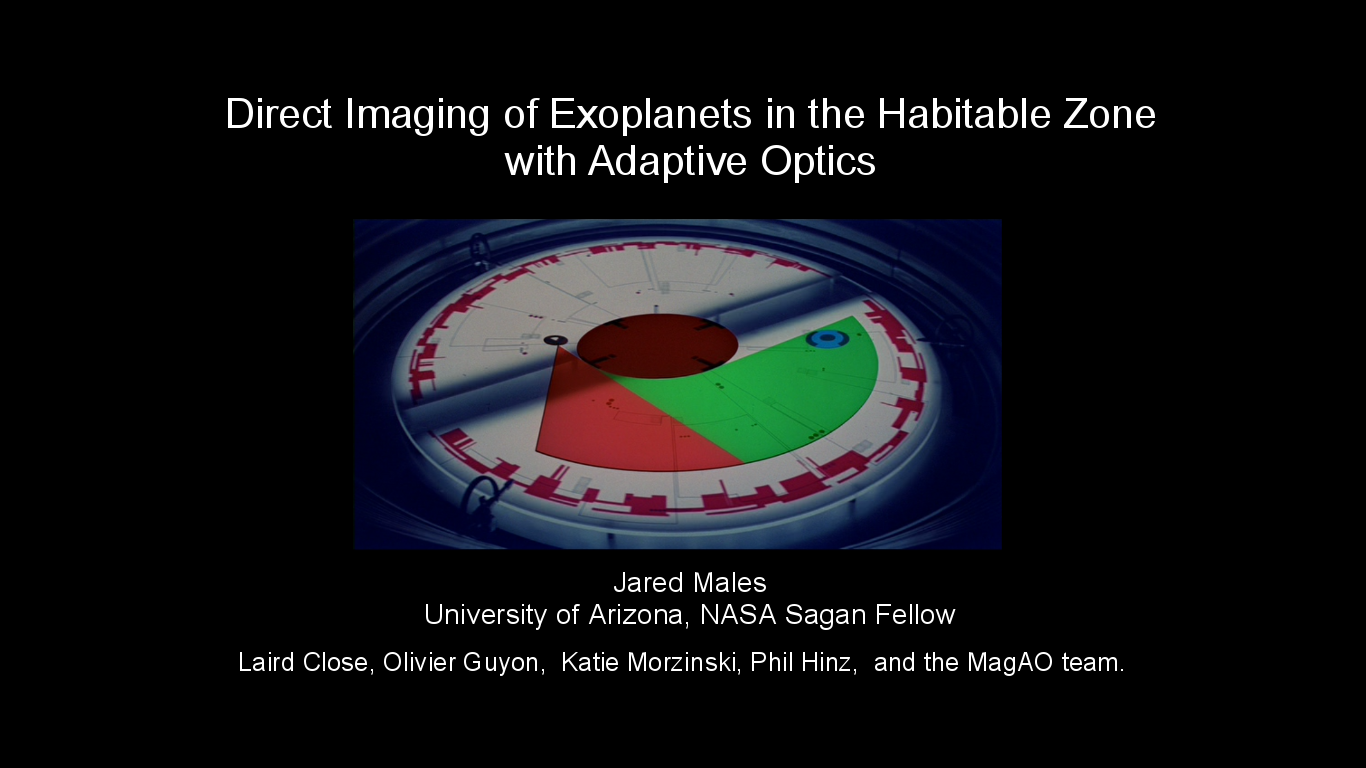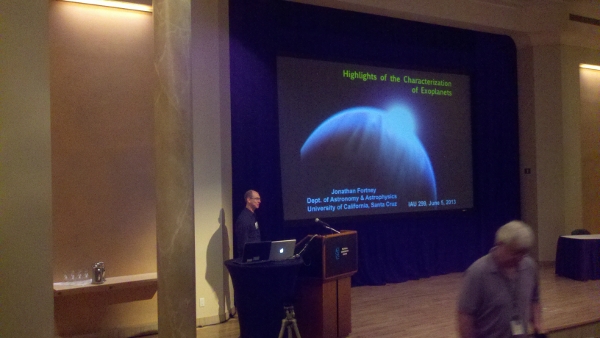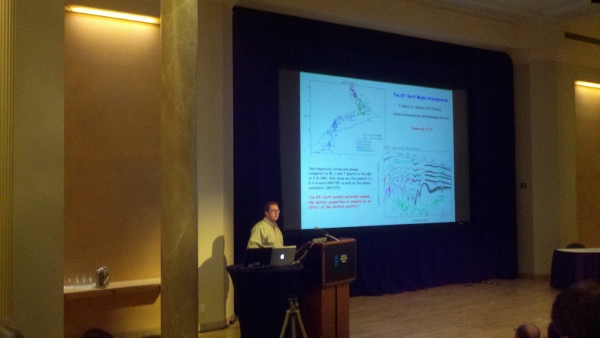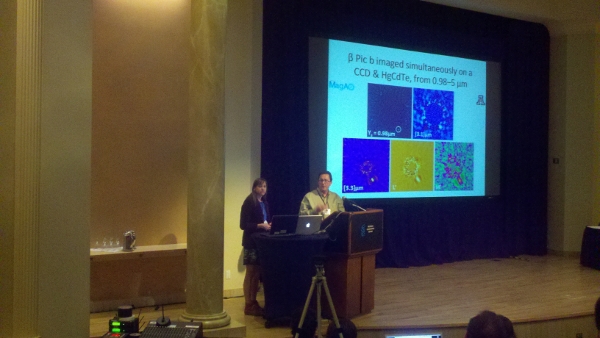MagAO have just spent the week at AO4ELT 4 = Adaptive Optics for Extremely Large Telescopes, 4th edition. The conference was held at the UCLA conference center at Lake Arrowhead, a very nice resort where the CfAO Fall Retreat is usually held.
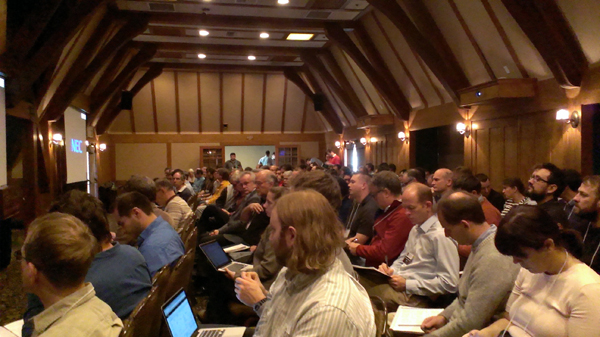
On Wednesday evening I went on a tour of Big Bear Solar Observatory organized by the conference. It was fun and interesting! The telescope is on a pier out in the lake, with a long narrow road going out to it:
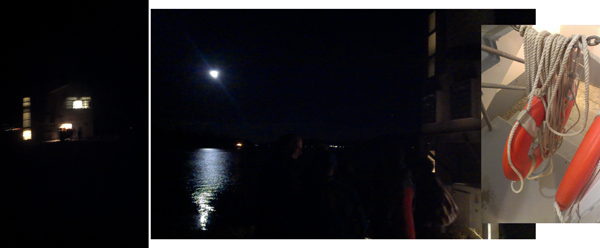
Visiting a solar telescope at night is like visiting a night-time-astronomy telescope during the day: You get a nice tour because the staff are able to give you their attention, and you get to go into the telescope dome and optics Coude room because they aren’t busy tracking the star(s) and collecting the photons.
We first saw the double-decker optics bench:
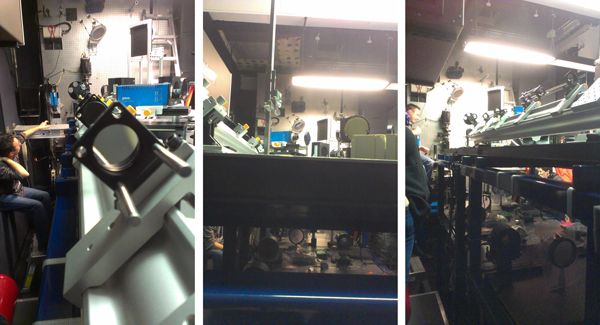
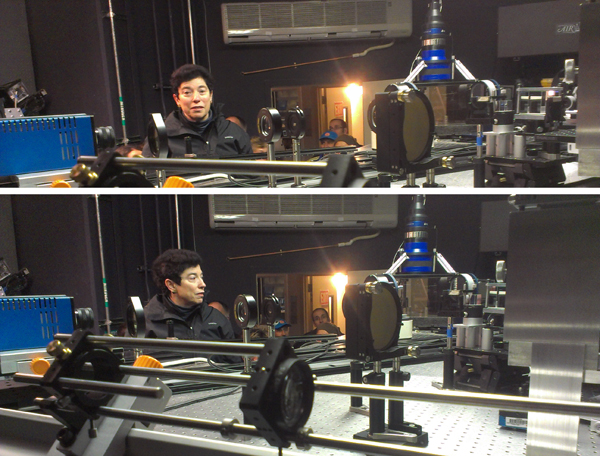
Then we saw the GUIs in the control room — looks fun!
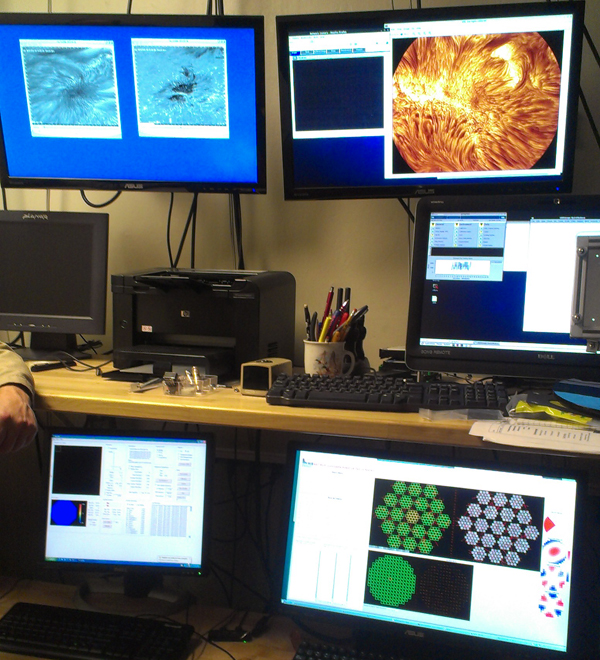
And some images of the final product:
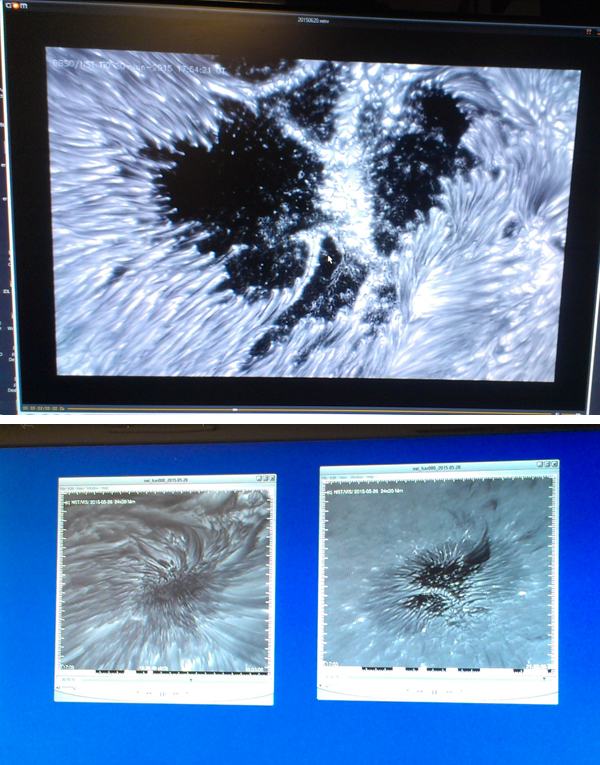
And finally, up to the top floor to see the telescope:
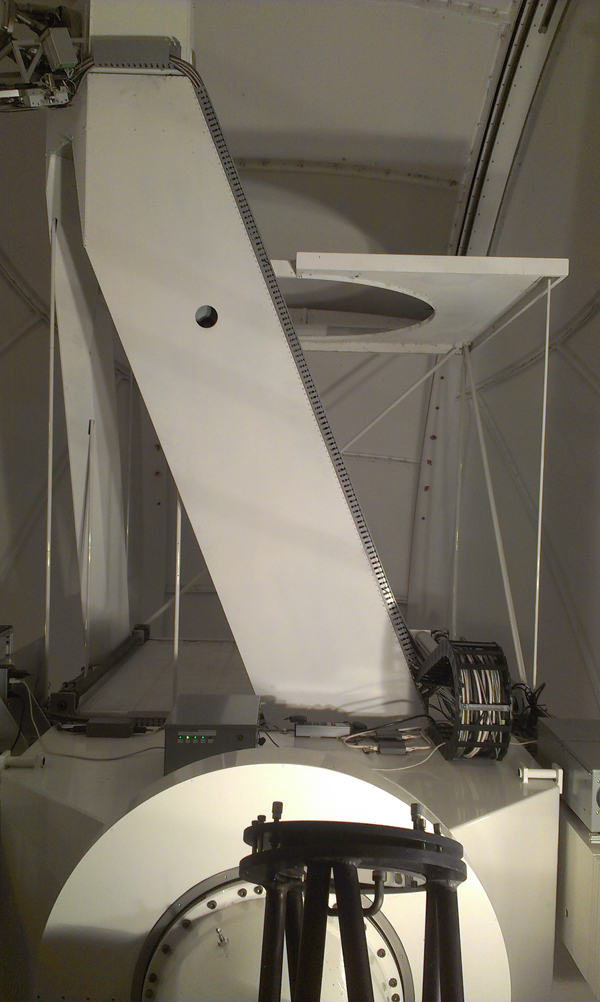
The secondary mirror is above the primary mirror, but off to the side. This is what is called an off-axis Gregorian, and I had never seen one before. The primary mirror is a segment of a parabola and was tested and polished to its final optical shape at the Steward Observatory Mirror Lab, and aluminized at Kitt Peak. The secondary mirror being off to the side means there are no “spiders” (or support struts that look like spider legs) in the beam to cause diffraction or scattered light that make it hard to image the high-contrast regions on the Sun. We also could use such a telescope design for imaging the faintest, coolest exoplanets.
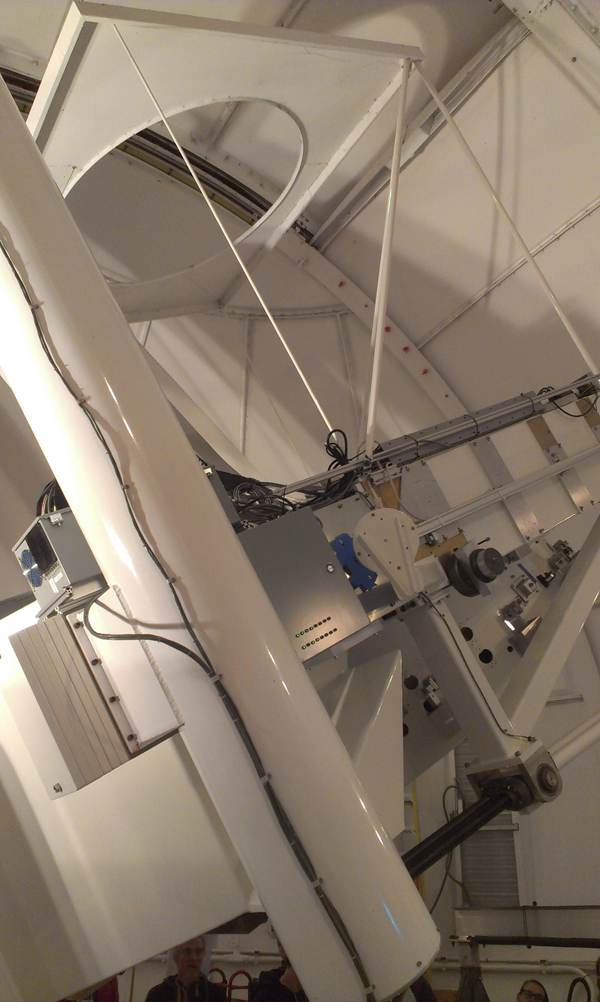
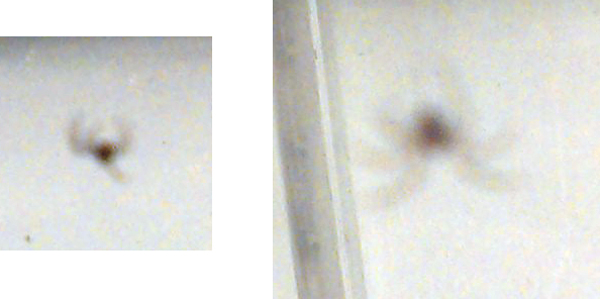
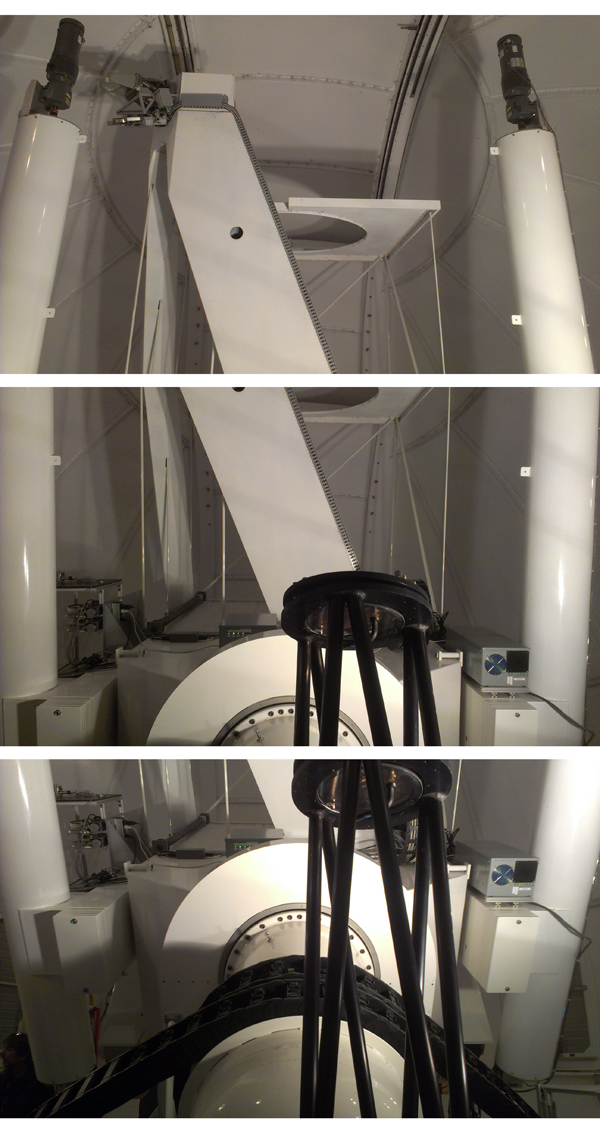
Thanks to the staff at Big Bear for the wonderful tour!
Now back to the conference. AO4ELT is a meeting where AO scientists and engineers come together to discuss cutting-edge problems and solutions in adaptive optics. This included science cases, wavefront control, deformable mirrors, detectors, lasers, etc. Jared gave 2 talks this week, one about his plan for an “extreme AO” (ExAO) version of MagAO called MagAO-X, and one about Olivier Guyon’s ExAO system at Subaru, SCExAO:
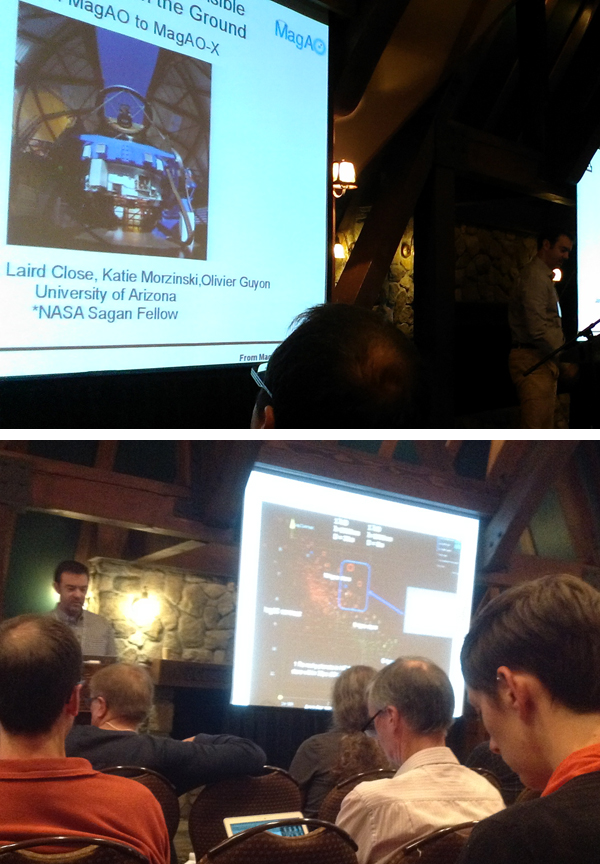
I had a poster about the science I am doing with MagAO and GPI to image Jupiter-like exoplanets and to measure their fundamental properties like temperature and luminosity:
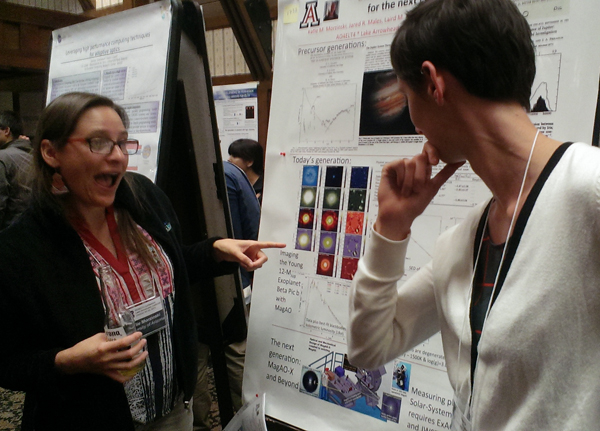
Runa had a poster about the E-ELT M4 wavefront corrector, which we quite enjoyed, as it was dense with cultural and AO references:
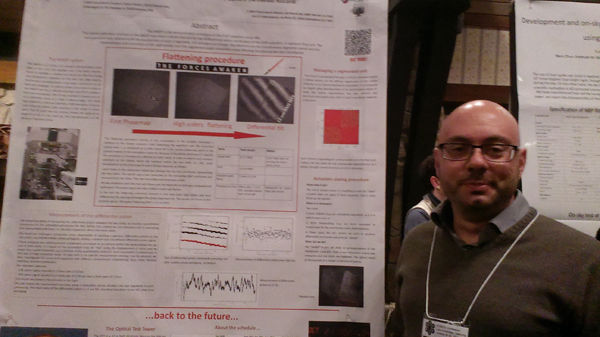
Laird talked about visible-light AO, for today’s and the next generation. His talk was 40 slides in 20 minutes and covered a lot of ground, and I was so taken that I forgot to get a picture of him giving the actual talk, so this will have to do:

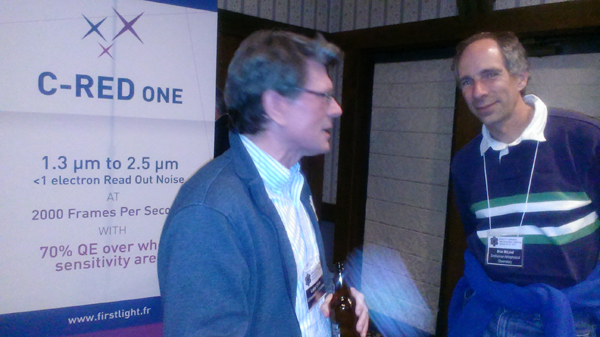
We enjoyed many formal and informal discussions at the meeting with our friends and colleagues about our new challenges in AO:
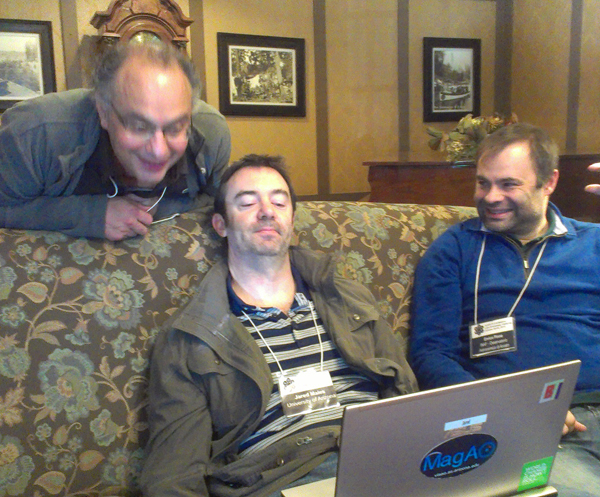
And finally, some wild life!
